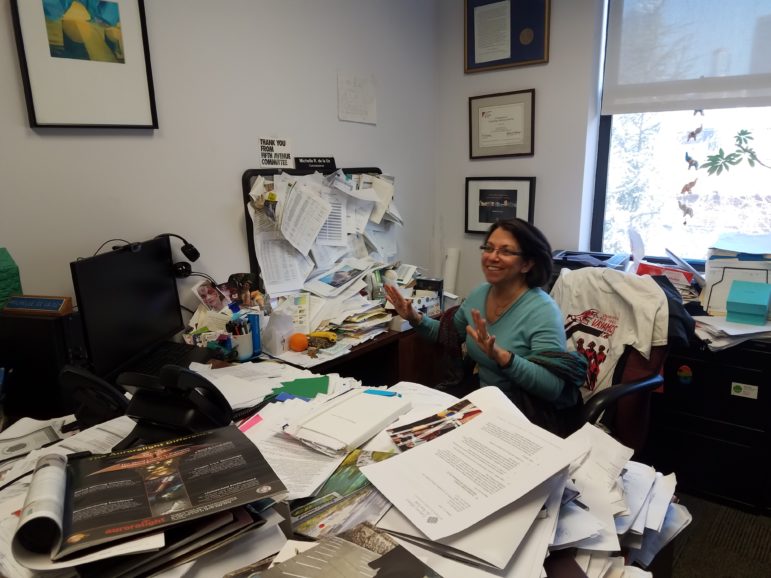
Jarrett Murphy
Michelle de la Uz in her office at the Fifth Avenue Committee in Gowanus.
The de Blasio administration’s neighborhood rezonings. The mayor’s plan to build or preserve 300,000 units of housing over a dozen years. The NextGeneration NYCHA plan to develop mixed-income apartments on the grounds of public-housing developments. The fight to preserve industrial land amid the city’s development wave. The effort to clean up the city waterways soiled by combined-sewer overflows.
They are some of the defining policy storylines of today’s New York. And, in one or more ways, they are on the plate of Michelle de la Uz, the executive director of the Fifth Avenue Committee. FAC develops and manages affordable housing, and is involved in work to guide the Gowanus Canal Superfund project. She’s been part of efforts to shape the NYCHA plan to build 50-50 housing at Wyckoff Gardens, and the looming rezoning of the Gowanus neighborhood, where concerns about affordability in industrial displacement will be prominent.
De la Uz is also a member of the City Planning Commission, where she has on a few occasions cast a lonely dissenting vote against the neighborhood rezonings proposed by the de Blasio administration, namely those covering East New York, East Harlem and Jerome Avenue.
In a Monday interview, de la Uz said the new data from the federal Housing Vacancy Survey—which indicates major additions to the housing stock and a retreat for rents at the higher-income levels—show that, to some degree, the city has faced a supply problem, but also that the de Blasio’s efforts have so far been unable to substantially boost supply at the income levels where it is most needed.
Named to the Planning Commission by then-Public Advocate Bill de Blasio and reappointed by Letitia James, de la Uz says she is guided by her experience in Gowanus, a neighborhood that “has seen all the mistakes of past rezonings.”
One frustration is the lack of solid information on the displacement risks of rezonings. “I think if you don’t measure it, how you can possible know what the impact is? The fact that the city’s environmental quality review and its methodology has categorically excluded any displacement analysis of risk to rent-stabilizing housing is significant,” she said. “There’s no data – or no data that’s being shared.”
De la Uz also weighed in on the question of whether the de Blasio administration is now doing and how well the Bridging Gowanus community planning process addressed the needs of NYCHA residents and industrial businesses in the area.








